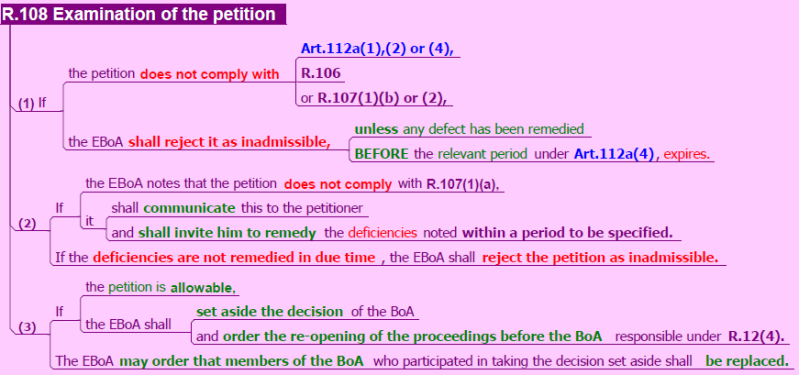Key Observations on Interpreting the EPC
- Multiple Sources Required: Interpreting the European Patent Convention (EPC) necessitates consulting various sources, including the EPO Guidelines, PCT-EPO Guidelines, and the Case Law of the Boards of Appeal of the EPO.
- Traditional Textbooks: Most law and reference books are presented in a purely black-and-white text format.
- Complex Legal Text: Legal texts often need to be read multiple times to fully understand their true meaning.
- Time-Consuming Process: Valuable time is lost when consulting different sections within one or more information sources.
Simplify Your EPC Interpretation with the Integrated EPC Guide
Interpreting the European Patent Convention (EPC) requires consulting multiple sources, such as the EPO Guidelines or the Case Law of the Boards of Appeal of the EPO. This often results in a cluttered workspace and a fragmented understanding.
The Integrated EPC Guide addresses this challenge by consolidating information from these diverse sources into a single, comprehensive reference. Say goodbye to a desk full of open books and hello to a streamlined, efficient way to navigate the complexities of the EPC.
Enhancing EPC Interpretation with Functional Designs
The human brain is divided into the left and right hemispheres. It is widely accepted that the left hemisphere processes information linearly, in text, and in black and white, while the right hemisphere is creative, thinks in color, and is responsible for dreaming. The highest efficiency in reading and learning is achieved when both hemispheres work together. When reading legal text in black and white, only the left hemisphere is engaged, while the right hemisphere may wander off, perhaps dreaming of sipping a cocktail on a white sand beach with palm trees.
Functional Use of Color: Adding color is beneficial only when it serves a purpose. For instance:
- Green can indicate something positive, possible, or with a favorable outcome.
- Red can signify something negative, impossible, or with an unfavorable outcome.
- A fixed colored background can aid focus, such as:
- Blue for the articles of the EPC.
- Pink for the implementing rules in the EPC.
Use of Icons: Icons, when given distinct meanings, can expedite the reading and retrieval process. They can be combined in schematic representations for procedural acts, enhancing clarity and efficiency.

Innovative Reading Technique for Legal Texts
Inspired by the use of mind maps in high school, a new reading technique has been developed to ensure that complicated legal texts can be easily digested. Legal text is broken down into meaningful parts and arranged in branches, which are read in order from left to right and from top to bottom. To further facilitate reading, some common and frequently used terms have been abbreviated, e.g., "Enlarged Board of Appeal" becomes "EBoA." All abbreviations are listed on the back cover of each book.
Here below an example is shown for Rule 108 EPC where the following text:
Rule 108 Examination of the petition
(1) If the petition does not comply with Article 112a, paragraphs 1, 2 or 4, Rule 106 or Rule 107, paragraph 1(b) or 2, the Enlarged Board of Appeal shall reject it as inadmissible, unless any defect has been remedied before the relevant period under Article 112a, paragraph 4, expires.
(2) If the Enlarged Board of Appeal notes that the petition does not comply with Rule 107, paragraph 1(a), it shall communicate this to the petitioner and shall invite him to remedy the deficiencies noted within a period to be specified. If the deficiencies are not remedied in due time, the Enlarged Board of Appeal shall reject the petition as inadmissible.
(3) if the petition is allowable, the Enlarged Board of Appeal shall set aside the decision of the Board of Appeal and order the re-opening of the proceedings before the Board of Appeal responsible under Rule 12b, paragraph 4. The Enlarged Board of Appeal may order that members of the Board of Appeal who participated in taking the decision set aside shall be replaced.
is transformed into:

Why the Integrated EPC Guide Doesn't Include a Table of Contents
It may be surprising that the Integrated EPC Guide lacks a table of contents. However, this is intentional. The European Patent Convention (EPC) is a well-structured law, with articles and rules grouped into specific parts and chapters. These parts generally follow the chronological order of a patent application's lifecycle. However, a downside is that articles and rules are located in separate sections of the EPC.
In the Integrated EPC Guide, the structure of the EPC articles serves as a framework for the related Implementing Rules. Additionally, information related to specific EPC articles from other sources, such as the EPO Guidelines and the Case Law book, is integrated at the relevant article. This means that only the structure of the EPC articles needs to be memorized, making a table of contents unnecessary.
To aid in quick retrieval, each part of the Integrated EPC Guide begins with an overview of the chapters, articles, and rules belonging to that part, along with references to other legal texts, such as certain Protocols or the Paris Convention.
Curious on how this all comes together ?
Find out and have a look at Content.